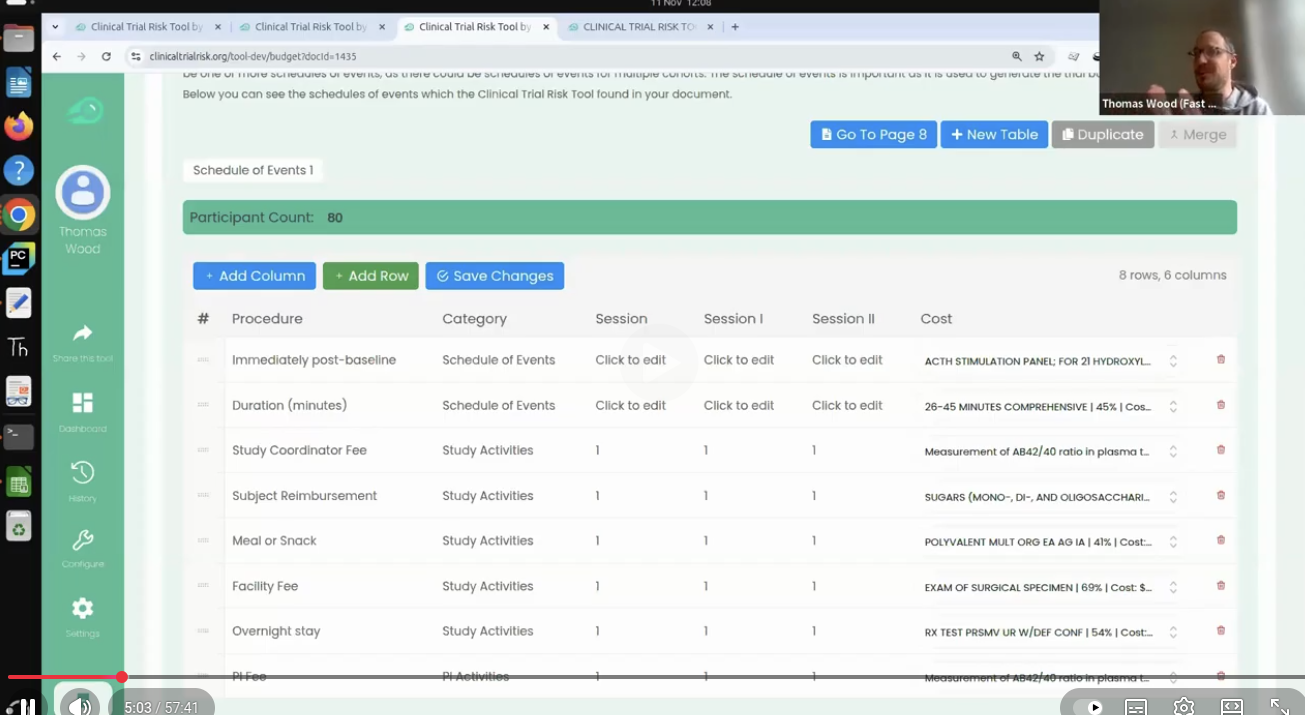
This post originally appeared on Fast Data Science’s blog on LinkedIn.
Clinical trials, the backbone of medical science advancement, often grapple with high costs, complexity, and lengthy timelines. Fast Data Science presents Fast Clinical AI, a game-changing solution that harnesses the power of Natural Language Processing (NLP) and predictive modelling to tackle these challenges head-on.
Fast Clinical AI automates the extraction of critical information from trial protocols, significantly reducing manual efforts. This tool identifies risk factors and predicts costs and enrolment criteria, ensuring efficient trial planning and execution.
By identifying potential risks early in the trial process, Fast Clinical AI allows researchers to take proactive measures, minimising the chances of trial delays or failures. This proactive approach ensures that trials are faster and more reliable.
Fast Clinical AI helps predict and manage the costs associated with clinical trials, ensuring better resource allocation. Reducing manual efforts and streamlining processes significantly reduces the time required to bring new treatments to market.
Explore how Fast Clinical AI can revolutionise your clinical trials. Visit here for more details. Learn more about clinical trial cost modelling with NLP and AI here. Connect with us today to see how we can support your clinical trial efforts. Let’s innovate together!
#ClinicalTrials #AI #NLP #HealthcareInnovation #FastClinicalAI

Thomas Wood presents the Clinical Trial Risk Tool at the Clinical AI Interest Group at Alan Turing Institute The Clinical AI Interest group is a community of health professionals from a broad range of backgrounds with an interest in Clinical AI, organised by the Alan Turing Institute. In the group’s November 2025 meeting, the talk was given by Dr Jeff Hogg, Programme Director, MSc AI Implementation (Healthcare), University of Birmingham and Clinical Innovation Officer in AI, University Hospitals Birmingham NHSFT, titled AI Readiness for Health and Care Provider Organisations.

Guest post by Safeer Khan, Lecturer at Department of Pharmaceutical Sciences, Government College University, Lahore, Pakistan Multi-Arm & Multi-Stage (MAMS) Clinical Trials Design Tips The design of clinical trials is increasingly challenged by the Rising Costs, limited availability of eligible patient populations, and the growing demand for timely therapeutic evaluation. Traditional parallel-group designs, which typically compare a single intervention to a control, are often insufficient to meet these pressures in terms of speed, efficiency, and resource utilization.

You can use the t-test when you want to compare the means (averages) of continuous data between two groups, such as blood pressure or maximum concentration of a drug in urine (Cmax). If you have data with a dichotomous outcome, you can use the Chi-Squared test instead - please try our Chi-Squared sample size calculator. The calculator below will calculate the minimum sample size for you. Your expected effect size d is the standardised effect size according to Cohen’s definition.